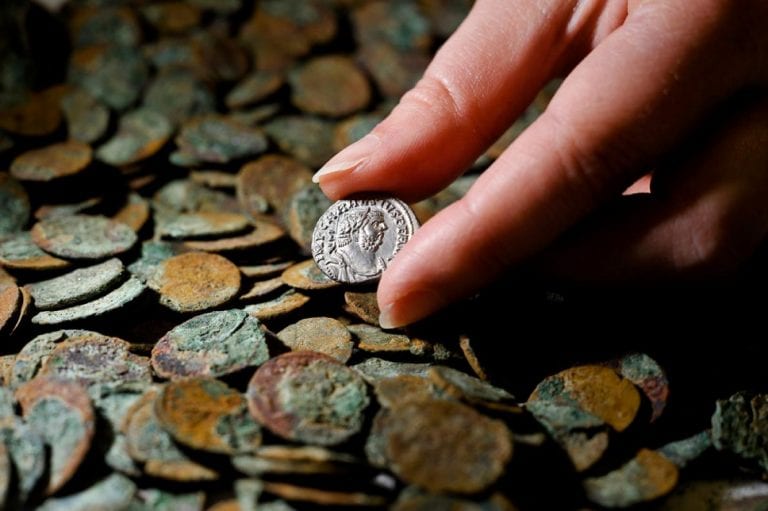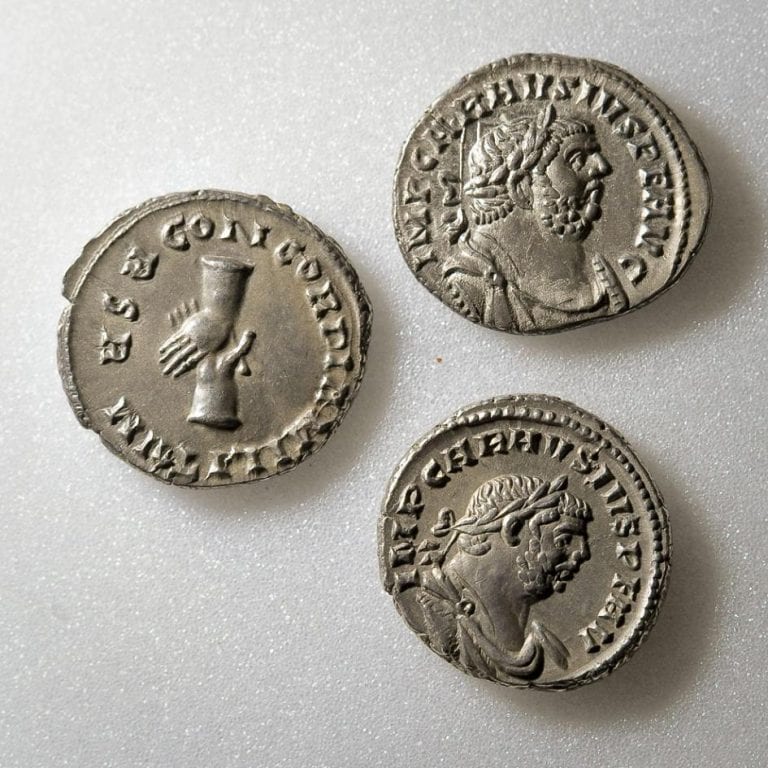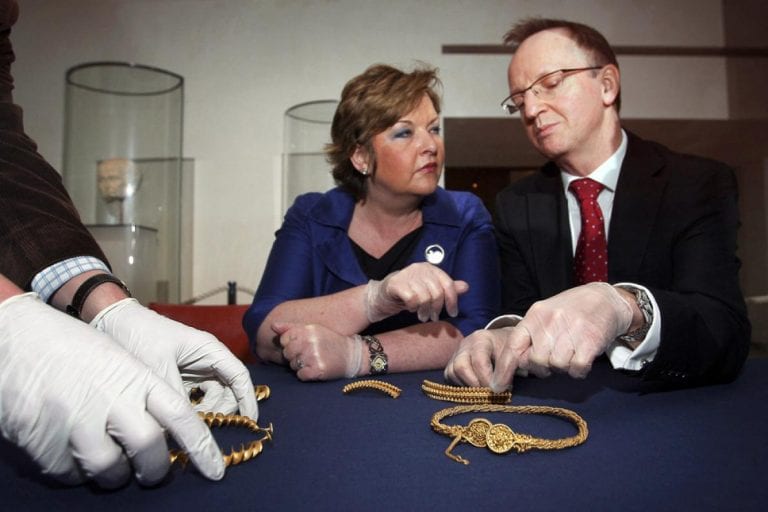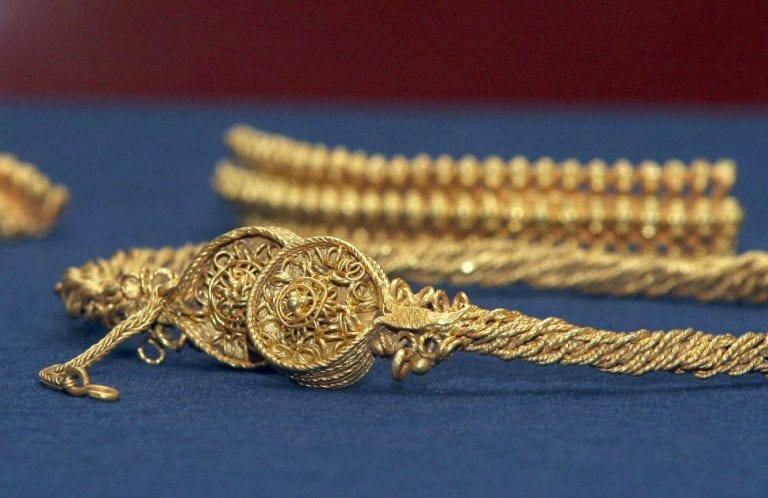news.nationalgeographics.com (at National Geographic Daily News) Photograph by Ben Birchall, PA Wire/AP

Old Money:
Fifty thousand Roman coins found in a field in Somerset, England, in 2010 (including the artifacts above) amount to the largest hoard of coins discovered in a single vessel—and the second largest hoard of ancient coins ever found in Britain, according to British Museum experts.
The coins, along with recently discovered Iron Age gold jewelry—both found by amateur treasure hunters—will be acquired by museums, thanks to a series of grants and donations, officials recently announced. The coins will go to England’s Museum of Somerset, which will put them on display after it reopens this summer.
The haul, most of which has been cleaned and restored, contains nearly 800 coins minted by Carausius, a Roman general who declared himself emperor of Britain in A.D. 286 and ruled for seven years before being assassinated by his treasurer.
During those seven years, Carausius spread his rule in part through propaganda—for example, by issuing high-quality silver coins bearing his likeness, such as the one pictured above.
The find also contained coins showing Rome’s mythical founders, Romulus and Remus, suckling a wolf—a scene never before found on Carausius coins. Carausius may have used the image to link himself with the historical Roman Empire.
“He was a great propagandist,” British Museum archaeologist Sam Moorhead told National Geographic News. “He basically introduced that coin as soon as he came to the throne.”

Face Value
Rare silver coins bearing Carausius’s portrait, including these three, stand out among the 52,000 newfound Roman coins, most of which are bronze.
The ersatz emperor’s coins are the youngest in the enormous hoard, suggesting the assemblage dates no earlier than A.D. 293, since Carausius was assassinated that year.
The find also changes how archaeologists see such hoards. It’s generally been assumed buried coins were hidden only temporarily, by owners concerned about the threat of invasion by Irish or Saxon raiders.
But this hoard—weighing 352 pounds (160 kilograms) and found in one ceramic pot—could never have been carried to the burial place in one piece, archaeologists say.
Instead, the hoard was likely a ritual offering—a pre-Roman British tradition that may have extended into Roman times. Coin burials from the era are more common in Britain than in any other Roman territory, according to Moorhead and colleagues.
The hoard was discovered by metal detector enthusiast Dave Crisp, who was searching farmland with permission of the owner. Under U.K. law, the value of any treasure found on private land is split between the landowner and finder.

High-End Torques
Another recent series of grants has allowed Edinburgh’s National Museum of Scotlandto acquire pre-Roman gold neck ornaments—shown on March 21 with Scottish Minister for Culture and External Affairs Fiona Hyslop and museum director Gordon Rintoul—for study and display starting this summer.
The so-called torques date from between the third and first century B.C. Amateur metal detector user David Booth discovered the treasure on his first time out—and just seven steps from his car, according to the museum’s website.
Booth was searching in Stirling, in central Scotland, when he made the discovery. The exact location has been kept secret to discourage a gold rush.
Two of the four Iron Age torques are made from twisted gold ribbons, a typical Celtic style for the time.
A third (next to Rintoul’s right hand) likely came from southern France, based on the distinctive tubelike design. The fourth—an intricate design made of fine wires twisted together (bottom right)—was made by “someone trained in the Greek or Roman world,” according to the National Museum.

Gold From Age of Iron
This ornate Mediterranean torque, along with the three other torques, was found in near perfect condition, buried in what was a wooden building, perhaps a shrine.
The distance the torques must have traveled before reaching their final burial place showed that wealthy Britons of the time would have had the resources to trade with far-off places.
The torque find—valued at £462,000 (U.S. $741,000)—is “the most important hoard of Iron Age gold ever found in this country,” Hyslop said in a statement.
—Rachel Kaufman
Published April 4, 2011









